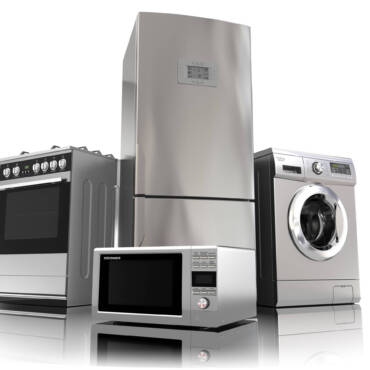What Goes Into the Average Cost to Install a Generac Home Generator
Determining the average cost to install a Generac home generator can be overwhelming, as several factors will influence your decision. This expense can range anywhere from $1,500 to $5,000 depending on your circumstances.
Labor tends to be the largest component of any generator installation. Your labor cost can range depending on the complexity of the existing electrical system and the experience of the installer. Also, the degree of electrical work required, distance to the electrical panel, and specialized skills required affect labor costs.
Materials play a significant role, too. These may include electrical wiring, a transfer switch, concrete pad, and permits. But material prices can fluctuate. The exact parts needed will depend on your generator size, electrical complexity, and fuel source. A simple electrical system that’s well-suited for generator integration will be less expensive. However, homes with pre-existing electrical issues may require modifications.
Where you install your home backup generator also affects the overall cost. If the installation site is inaccessible or requires extensive upgrades or changes, your labor costs could jump. Long distances to your electrical panel may require additional wiring or conduit.
Your source of fuel is also a key element to the equation. Natural gas is generally simpler to install compared to propane tanks. Natural gas generators may also require less maintenance compared to propane generators.
How Labor Factors into Your Average Cost to Install a Generac Home Generator
Why is labor the largest expense when calculating your average cost to install a Generac home generator? Licensed electricians have the knowledge, training, and experience necessary to safely connect the generator to your home’s electrical panel. They ensure the job meets all local electrical codes.
The time commitment for installation is also significant, often taking a full day or even multiple days. In addition to installation, site preparation adds to the total expense. This includes choosing an optimal location for the generator and ensuring it complies with rules and requirements. Pouring a concrete pad for stability may also be necessary.
Your Generac technician must safely connect the generator to your home’s electrical panel, providing proper transfer switch integration. This step is crucial to ensure seamless switching between utility power and home standby generator power during an electrical outage. The electrician’s primary responsibility is ensuring the connection between your generator and home’s electrical system is finished correctly. This involves skillfully navigating the existing electrical system to connect your new generator seamlessly, while prioritizing safety.
We can’t forget the gas line installation from your propane tank to the generator, if that’s the option you’ve chosen. This task requires proper safety measures. Propane is a highly combustible gas, and improper installation can lead to potential hazards. Your Generac technician must carefully plan and execute the pipeline installation, taking all the necessary precautions to prevent leaks.
Finally, your electrician will thoroughly test the system to ensure it functions correctly and meets all proper protocol and standards. This testing process involves checking various components, including the transfer switch, cabling, and electrical connections. This ensures they are secure and functioning, without failing.
Electrical Codes, Transfer Switch Technology, and Potential Modifications
Meeting National Electrical Code safety regulations is also calculated into the average cost to install a Generac home generator. These compliance and safety guidelines are crucial.
Beyond the national rules, an electrician must understand your home’s electrical system inside and out in relation to national codes. This includes assessing compatibility issues and determining the appropriate transfer switch size.
As mentioned above, a transfer switch automatically switches to generator power when the electricity goes out. A seamless transition back to utility power is enabled once utility power is restored. Bonding creates a single point of connection between neutral and ground conductors to make all of this happen successfully.
“Permanently installed generators are separate power sources and often installed as separately derived systems,” according to Electrical Contractor Magazine. “Connecting a generator as a separately derived system is determined by the type of transfer switch specified for the design. It’s important to understand the relationship between the type of transfer switch and how the grounding connections should be made.”
From the transfer switch to the interconnected parts, an electrician can resolve any challenges your generator runs up against. Fine-tuning connections and output requires a thorough understanding of electrical principles, circuits, and other components.
A technician will test voltage, grounding, and connectivity, identifying potential compatibility issues. Your personal expert will recommend and make any modifications and accommodations necessary after a thorough analysis.
Why Materials Vary in the Average Cost to Install a Generac Home Generator
Your materials expense will be broad as you assess the average cost to install a Generac home generator. Many contractors include the transfer switch in the installation quote, but some may not. It’s easy to spend a few hundred dollars up to $1,000 on a transfer switch depending on your situation.
Electrical wiring also affects your material costs. Your electricity panel’s distance determines how much wiring is required, and the cabling cost increases with longer runs. The thickness of wiring, or gauge of wiring, is a key component, as thicker wires handle higher electrical loads. Some technicians can help you consider an alternative installation strategy to minimize your initial need for extensive wiring.
Miscellaneous hardware, grounding equipment, circuit breakers, conduit pipes, and connectors may also be included. As always, size and complexity impact your cost. Make sure you inquire about all these supplies to ensure your installation quote is accurate.
Permit requirements and associated fees also play a key role in determining your total costs. An application must be submitted to the local governing authority, along with detailed information about your proposed installation. At the hyper-local level, fees vary by jurisdiction and type of work.
Prices for concreate pads and the pouring costs can vary depending on your pad’s size and local material prices. If your home standby generator is heavy or local codes require a minimum size, a larger pad might be needed. Pad thickness and structural reinforcement are all part of this total amount.
It All Comes Down to Size, Complexity, Location, and Fuel Source
Your average cost to install a Generac home generator will be determined by your home’s size and needs. A typical whole-house generator can power a medium-sized refrigerator, microwave, television, and sump pump. It’ll also cover a small portable space heater and a moderate-sized electrical stove or hot plate for cooking.
“A 10-kilowatt whole house generator will power just about all the major appliances in your house,” according to HomeServe. This includes standalone freezers, refrigerators, window air conditioners, and your dishwasher. “Looking for a whole-house generator that powers your HVAC system as well? You’ll have to go at least 14 Kw or higher.”
This is why your home’s electrical system may require additional, costlier work. It assures compatibility with the generator you buy, but it can also mean higher labor and material costs. On top of that, you may have to upgrade your existing electrical panel to handle the generator’s load.
These installation complexities shouldn’t be ignored. With the right Generac technician, you’ll be in good hands.
W. Danley Electrical
What’s the average cost to install a Generac home generator? At W. Danley Electrical, we stand out in the world of home backup generator solutions. We assist you throughout the entire process. We help prepare you for your installation, as well as obtaining permits, inspections, and assisting with repair and maintenance. At W. Danley Electrical, we also help you optimize and fine-tune your situation to determine the correct generator size. Get the most out of your investment.


